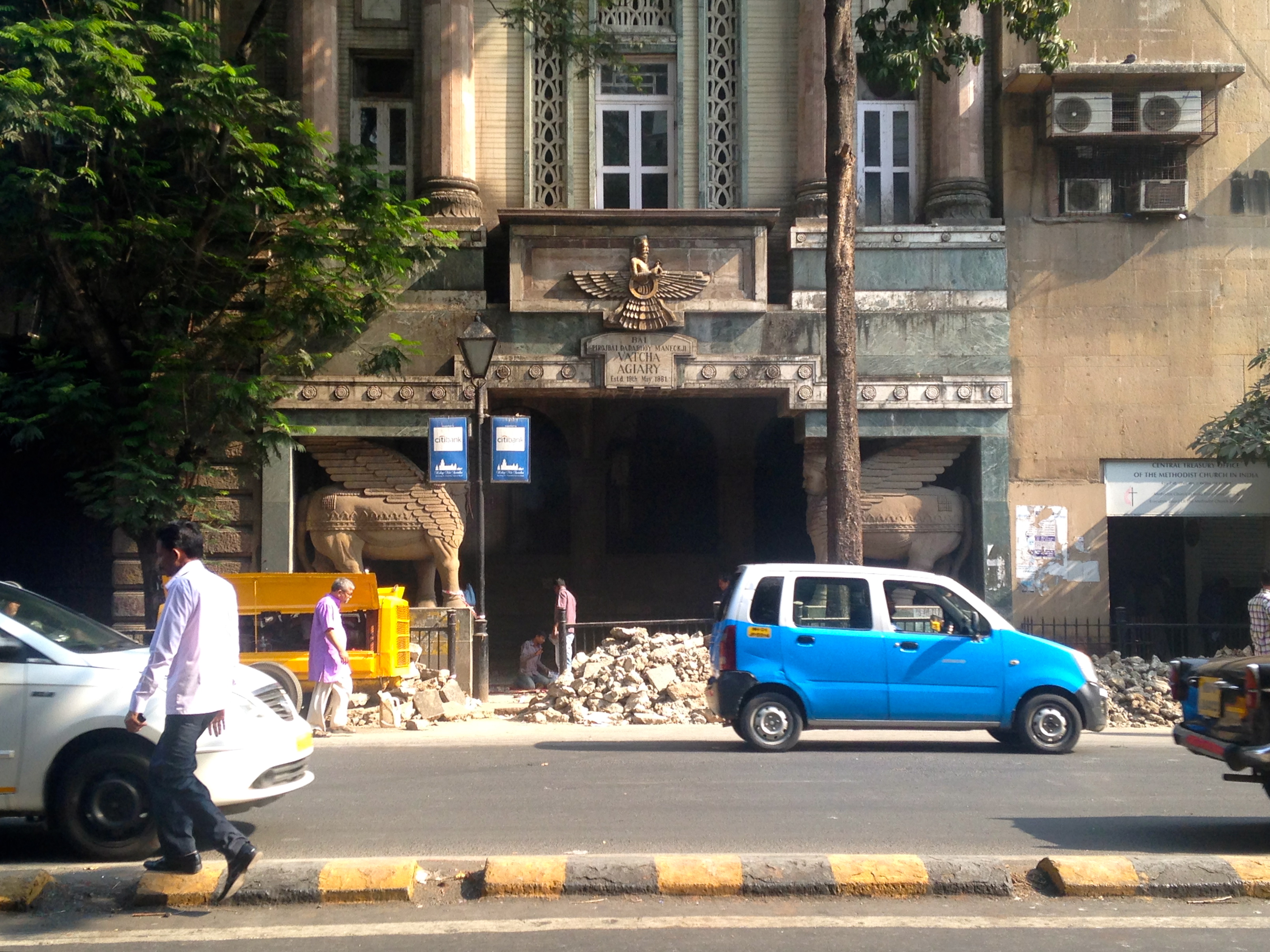MUMBAI—Ardeshir Nariman, 15, is fast approaching graduation. Like many boys his age in Mumbai—educated and upwardly mobile, his curiosity heavily seasoned with ambition—he'll continue to college to study science when he finishes school this spring. Unlike most of the other boys, he will also be ordained a priest.
Nariman's education was supplemented by intense religious study. He was born into a priestly family in the Zoroastrian faith, and when he turned 6, his parents sent him to boarding school to learn the religion's prayers and rituals. For nearly 10 years, he's been waking up before dawn to master the ancient Avesta language and memorize whole books of prayers, then swap those books for math and science and walk down the block to a secular school. Yet he has no plans to make priesthood his profession.
"No, I'd prefer not to," Nariman said. "As priests, we earn a bit of money. I do all the rituals and do them perfectly. But other people, like my cousins, they still live with their parents. They've never sacrificed as I have done, and still, I earn less money than they do. It's frustrating."
Nariman's rational, brusque career choice pleases his parents, but it worries his religious community. Nariman has just 16 classmates—total, counting boys of all ages—at Mumbai's Dadar Arthornan Institute, one of two schools for priests in Mumbai. There are only about 60,000 Zoroastrians left in India. Only around 10 percent of boys come from priestly families, and they must begin studying as young children.
Demographers predict India's Zoroastrian population, called the Parsis, will shrink by half by 2050. At the same time, more and more of India's youth are pursuing college and professional careers. As the number of priests tending Zoroastrian fire temples teeters at the edge of a precipitous drop, Parsi leaders have begun to incentivize priesthood, hoping to entice young men.
"Everything is changing, changing fast, and it's happening before my eyes," said Ramiyar Karanjia, principal at Nariman's school. "Priests' income levels were less" compared to when he graduated nearly 40 years ago.
"Today, it's not a very handsome salary, but priests are able to afford a middle-class lifestyle. There are now institutions that are ready to give money for education so the burden on families is less. We're trying to make our study less rigorous to attract students," he said.
Zoroastrian religious life centers around fire temples. Priests must perform the five half-hour rituals daily to tend each temple's flame, in addition to weddings, initiation ceremonies and death rituals that can last for more than two weeks. Until a generation ago, most priests only earned occasional checks from families who asked them to perform ceremonies. Most outside cities lived in poverty.
"We've paid priests a peon's wage and we want them to deliver what a CEO does. That is not correct," said Daisy Todiwalla. As a staffer at the Parsi Resource Group, a Zoroastrian charity in Mumbai, Todiwalla began disbursing pensions, health insurance benefits and education grants for children of priests in 2006. Of about 800 priests in India, 650 now receive health insurance coverage for themselves and their families. Sixty children receive annual scholarship checks.
Two years ago the Bombay Parsi Punchayet, another charity, began paying Mumbai's 120 full-time priests 10,000 rupees ($160) per month—nearly twice India's monthly average income—but the scheme ran out of money after a year. The group continues to offer priests rent-free apartments.
Still, while these programs have eased day-to-day life for practicing priests, Todiwalla isn't sure they've enticed any young ones. "We've done so much, but it's not going the way we want it to," she said. "The boys don't want to become priests full-time, and the girls don't want to marry the priests… Just a handful have taken it up."
Parsi marriage rates are low to begin with—one in five men are still unmarried at 50. But many priests echoed Todiwalla's concern. One full-time priest said his unpredictable schedule ended a relationship. Part-time priest Spenta Karkaria, 25, added that a girlfriend's parents usually prefer a doctor or lawyer as a potential son-in-law.
Higher salaries and insurance plans have improved priests' living standards, but not necessarily public perception of their professional prestige, he said. "If you ask people, 'what is your designation?' saying you're a priest in a fire temple is kind of a decline compared to saying, 'I'm a managing director of a company.' People feel it's not as prestigious," said Karkaria, who is working on a degree in commerce.
For young men like Nariman and Karkaria, choices about careers, financial futures and public image feel huge. But for Zoroastrian leaders, constantly reminded of how fast the community is shrinking, the sum of all these personal decisions might determine whether or not their faith survives. With no one to tend them, Todiwalla said some fire temples have closed, their flames relocated to temples elsewhere.
"We vehemently say we will not be washed out, but the print is showing something else, which is frightening. I don't know what's going to happen [to the Parsis]," Todiwalla said. "But if priests are not taken care of, then what's going to happen to the religion?"








